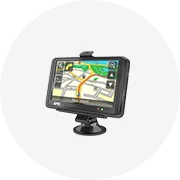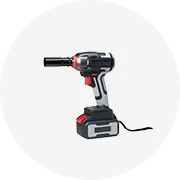Types of Ford Ranger Roof Bars
When choosing Ford Ranger roof bars, understanding the different types available is crucial for selecting the right option for your specific needs. Each type offers unique advantages for different applications.
Cross Bars
Among the most versatile and popular options, cross bars run parallel across the roof, typically mounted onto existing roof rails.
Best for: Carrying bulky items like kayaks, bikes, and cargo boxes
Installation: Moderately easy, requires roof rails
Roof Railing Bars
These run lengthwise along the roof edges, providing a foundation for cross bars and other accessories.
Best for: Cost-effective base system, versatile attachment points
Installation: Easy, uses door jam clamps without drilling
Side Bars
Running along the vehicle's sides, these enhance appearance while offering practical functionality.
Best for: Improved roof accessibility, carrying oversized equipment
Installation: Moderate difficulty, may require professional help
Fork and Carrier Bars
Specially designed for bicycle transportation, with fork bars securing front forks and carrier bars holding the bicycle frame.
Best for: Dedicated cyclists, secure bike transport
Installation: Moderate, often requires cross bars as a base
Utility Truck Ladder Bars
Perfect for commercial applications, these provide safe and convenient access to the roof rack or load.
Best for: Commercial use, frequent roof access needs
Installation: More complex, may require professional installation
| Roof Bar Type | Best Application | Main Advantages | Installation Complexity |
|---|---|---|---|
| Cross Bars | General cargo, sports equipment | Versatility, widespread accessory compatibility | Moderate |
| Roof Railing Bars | Base system for other accessories | Affordability, no drilling required | Low |
| Side Bars | Enhanced appearance, roof access | Aesthetic appeal, functionality | Moderate |
| Fork and Carrier Bars | Bicycle transportation | Secure bike transport, prevents damage | Moderate |
| Utility Truck Ladder Bars | Commercial use | Safe roof access, practical for work vehicles | High |
Expert Tip: For optimal versatility, consider installing roof railing bars with compatible cross bars. This combination provides the most flexible system for various carrying needs throughout all seasons.
Specifications and Maintenance of Ford Ranger Roof Bars
Material
Roof bars are primarily manufactured from aluminum or steel. Aluminum bars offer lightweight construction with excellent corrosion resistance, making them low-maintenance but typically having lower load capacities. Steel bars provide superior strength and durability but require more maintenance to prevent rust, especially in coastal areas.
Load Capacity
The load capacity of Ford Ranger roof bars ranges from 30kg to 150kg depending on the material and design. This specification is critical for ensuring safe transportation of equipment. Dynamic load capacity (while moving) is always lower than static load capacity (when parked).
Design
Common designs include aerodynamic profiles that reduce wind noise and drag (ideal for highway driving), and ladder-style bars with their rugged, traditional appearance better suited for off-road applications. The design significantly impacts both functionality and fuel efficiency.
Dimensions
Roof bars come in various widths and lengths designed specifically for the Ford Ranger's roof dimensions. Larger dimensions offer increased storage capacity but may impact aerodynamics and vehicle height restrictions. Always check vehicle height with roof bars installed.
| Material Type | Average Load Capacity | Corrosion Resistance | Weight | Best For |
|---|---|---|---|---|
| Aluminum | 30-75 kg | Excellent | Light | Everyday use, fuel efficiency |
| Steel | 75-150 kg | Good (with coating) | Heavy | Heavy loads, off-road use |
| Composite | 30-50 kg | Excellent | Very Light | Aesthetic appeal, light loads |
Essential Maintenance for Ford Ranger Roof Bars
Proper maintenance extends the lifespan of your Ford Ranger roof bars while ensuring safety and optimal performance. Implement these key maintenance practices:
- Regular Inspection: Check monthly for signs of wear, loose fittings, or structural damage. Pay special attention to mounting points and load-bearing surfaces.
- Thorough Cleaning: Remove dirt, road salt, and debris with mild soap and water. Avoid harsh chemicals that can damage protective coatings.
- Mounting System Verification: Periodically check tightness of all nuts, bolts, and clamps according to manufacturer specifications. Overtightening can damage components.
- Lubrication: Apply silicone-based lubricant to moving parts and locks every 3-6 months to prevent seizing and ensure smooth operation.
- Protective Storage: When not in use for extended periods, consider removing and storing roof bars in a dry environment to prevent unnecessary weathering.
Important Safety Note: Never exceed the manufacturer's specified maximum load capacity. Overloading roof bars can lead to component failure, roof damage, and potentially dangerous situations while driving.
How to Choose Ford Ranger Roof Bars
Selecting the optimal roof bars for your Ford Ranger requires careful consideration of several key factors to ensure functionality, compatibility, and value for your specific needs.
Purpose & Usage
Identify your primary needs: cargo transportation, recreational equipment carrying (bikes, kayaks, surfboards), off-road gear storage, or commercial use.
Key question: What will you transport most frequently?
Compatibility
Ensure the roof bars are specifically designed for your Ford Ranger model year and roof configuration. Universal bars may not provide optimal fit or safety.
Key question: Does your Ranger have factory mounting points or require clamp-on installation?
| Selection Factor | Considerations | Importance Level |
|---|---|---|
| Primary Use | Determine what you'll carry most often (general cargo, specific equipment, professional tools) | Critical |
| Load Capacity | Calculate maximum weight needs including future requirements (30-150kg range) | Critical |
| Material Quality | Balance between weight, strength, and corrosion resistance | High |
| Noise Factor | Aerodynamic designs reduce wind noise for frequent highway driving | Medium |
| Security Features | Look for locking mechanisms to prevent theft | High |
| Ease of Installation | Consider DIY ability vs. professional installation needs | Medium |
| Aesthetic Appeal | Match vehicle style (rugged, streamlined, utilitarian) | Low-Medium |
Professional Advice: When balancing budget constraints with quality, prioritize load capacity and material quality over aesthetic features. A properly functioning roof bar system that safely carries your equipment is more valuable than one that merely looks impressive.
How to DIY and Replace Ford Ranger Roof Bars
Installing or replacing roof bars on your Ford Ranger can save you money while giving you greater control over your vehicle's functionality. Follow this comprehensive guide for a successful DIY installation.
Safety First: Always work with a partner when installing roof bars. The awkward positioning and weight of components can lead to personal injury or vehicle damage if attempted alone.
Required Tools and Materials
- Ford Ranger-compatible roof bar kit (with all mounting hardware)
- Hex key/Allen wrench set
- Screwdrivers (flathead and Phillips)
- Torque wrench
- Measuring tape
- Safety glasses
- Clean microfiber cloths
- Isopropyl alcohol (for cleaning mounting surfaces)
Step-by-Step Installation Process
-
Prepare Your Vehicle
Thoroughly clean the roof and mounting areas. Remove any existing roof bars if applicable. Use isopropyl alcohol on a microfiber cloth to ensure mounting surfaces are free of dirt, wax, and oils.
-
Identify Mounting Points
Locate the factory mounting points or determine where clamps will be positioned. On newer Ford Rangers, look for small plastic covers that conceal threaded mounting holes.
-
Prepare the New Roof Bars
Unpack and assemble your new roof bars according to the manufacturer's instructions. Verify all components are present before beginning installation.
-
Position and Align the Bars
With assistance, place the roof bars in their approximate positions. Measure from fixed points (windshield, doors) to ensure the bars are parallel and evenly spaced. Most Ford Ranger roof bar kits include measurement guides.
-
Secure Mounting Hardware
Install bolts or clamps finger-tight initially. This allows for adjustments before final tightening. For factory mount points, apply a small amount of anti-seize compound to threads if recommended.
-
Final Tightening
Once properly positioned, use the torque wrench to tighten all fasteners to the manufacturer's specified torque values. This prevents over-tightening that can damage components or under-tightening that creates safety hazards.
-
Install End Caps and Accessories
Add finishing touches like end caps, wind deflectors, or channel strips. These components improve aerodynamics and reduce wind noise.
-
Verify Installation
Check all mounting points and fasteners again. Gently try to move the bars by hand - they should be completely secure with no movement. Conduct a low-speed test drive in a safe area to check for unusual noises.
Installation Tip: Mark mounting positions with masking tape before drilling or permanent installation. This allows you to step back and verify alignment from different angles before committing to final placement.
Frequently Asked Questions
While roof bars can be fitted to most Ford Ranger models, compatibility varies based on the specific year and roof configuration. Newer Rangers (2019+) typically come with factory mounting points that accept OEM and aftermarket roof bars. Older models might require clamp-on systems that attach to the roof gutters or door frames. Always check the manufacturer's compatibility guide for your specific Ranger model before purchasing.
Roof bars significantly expand the versatility and functionality of a Ford Ranger by:
- Increasing cargo capacity beyond the truck bed
- Enabling secure transportation of oversized items like kayaks, canoes, and lumber
- Allowing installation of specialized racks for bikes, skis, and other sports equipment
- Providing mounting points for off-road accessories like light bars and awnings
- Preserving interior space for passengers while maximizing carrying capacity
- Keeping wet or dirty gear outside the vehicle
For both recreational and professional Ranger owners, roof bars represent one of the most cost-effective vehicle upgrades for enhanced functionality.
Yes, roof bars can impact fuel economy in several ways:
| Factor | Impact Level | Fuel Economy Effect |
|---|---|---|
| Empty roof bars | Low to Moderate | 2-5% reduction |
| Loaded roof bars | Moderate to High | 5-15% reduction |
| Aerodynamic bars | Lower Impact | 1-3% reduction |
| Square/traditional bars | Higher Impact | 3-8% reduction |
To minimize fuel consumption impacts, consider removing roof bars when not in use for extended periods and opt for aerodynamic designs if frequent highway driving is expected.
Installation time varies based on several factors:
- Factory mounting points: 30-45 minutes
- Clamp-on systems: 45-60 minutes
- Systems requiring drilling: 1.5-2 hours
- Complex integrated systems: 2-3 hours
First-time installers should allocate additional time to carefully read instructions and ensure proper alignment. Having an assistant can significantly reduce installation time and improve accuracy. Professional installation typically takes less time but adds cost to the project.
























































